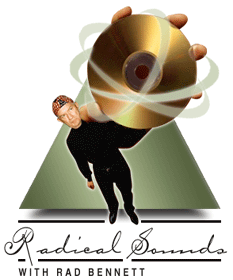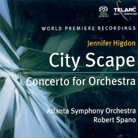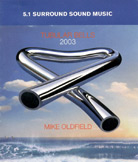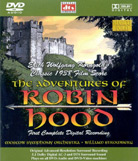 |
| June 1, 2004 Radical Sounds: Tying Things Up I left a few loose ends last month
that should be cleared up: When I chose to write about the Abbado
Beethoven symphonies on DVD-A, I had planned to give equal time to a comparable
recording on DG SACD with Herbert von Karajan and the Berlin Philharmonic. That set has
now arrived. It was a bit of a nice surprise. Karajan recorded the symphonies three times
in stereo. Since DG had previously released his third go-around of the Ninth on SACD with
a new and very successful multichannel mix, I had assumed the complete symphonies would be
an expansion of that project. Wrong. I left a few loose ends last month
that should be cleared up: When I chose to write about the Abbado
Beethoven symphonies on DVD-A, I had planned to give equal time to a comparable
recording on DG SACD with Herbert von Karajan and the Berlin Philharmonic. That set has
now arrived. It was a bit of a nice surprise. Karajan recorded the symphonies three times
in stereo. Since DG had previously released his third go-around of the Ninth on SACD with
a new and very successful multichannel mix, I had assumed the complete symphonies would be
an expansion of that project. Wrong.
The box of all the symphonies turned out to be the groundbreaking 1963 recordings, the first stereo sessions Karajan conducted of these monumental pieces. Moreover, they are presented in an archival, even reverent manner. The tracks are the original, pure stereo ones; no new mix here. And they are wonderful. The advanced resolution of SACD makes it possible to hear things that were difficult to ascertain from the original vinyl LPs, yet advanced resolution also makes possible a warm, airy, analog-like sound. The best of two worlds. There is more transparency than in the originals, especially in passages involving woodwinds and strings. One can hear "through" the strings to pick up the woodwind passages without having to strain. The full-orchestra passages, such as the finale of the Fifth Symphony, have weight and clarity to burn, yet remain quite transparent. But it’s not just about the Fifth. These performances are all very exciting. If you have a universal player, you will probably want both the Abbado and Karajan readings; but if you only have SACD or only DVD-A, it is great to know you don’t have to pick an "also-ran." Both traversals set standards. I also raved about Elton John’s Goodbye Yellow Brick Road in reviewing the SACD version, and meant to include news of the DVD-A version, but it did not arrive in time. It is here now, and simply glorious. It has the same great sound as the SACD, perhaps even better focused, with two further advantages: The complete album is included on one disc -- you will not have to change sides as you do with the SACD -- and the bonus DVD documentary is included as a standard extra. On the down side, you cannot take the DVD-A and pop it into your car CD player (a problem soon to be solved with the perfection of the DualDisc), which you can do with the hybrid SACD. Whatever conveniences you feel are best for your own personal use, the set, in one or another version, is mandatory for a budding high-resolution collection. The Who’s Tommy arrived in both SACD and DVD-A versions. Each has two discs; the DVD not taking advantage of DVD-A’s potentially longer playing time. But each set has the work complete on the first disc, anyhow; the second disc being saved for a boatload of extra takes and demo tracks. The sound is excellent: clean and crisp. Roger Daltrey’s vocals exhibit a lot more nuance than I have ever heard before. The surround mix is not overdone, the action still focused up front, with surround only being used to enlarge the stage and give the front stage a more three-dimensional sound. I’d go for the slightly warmer DVD-A, but it’s like picking between rubies and emeralds: You can’t go wrong with either. I remember when I started this column it was difficult to find three recordings a month that could "pass muster." That is no longer the case, as the number of advanced-resolution recordings grows and grows. Here are the three I have for you this month, each a gem:
Jennifer Higdon writes shimmering, kaleidoscopic music that has high listener appeal. The concerto was written for the Philadelphia Orchestra, and is a radiant, virtuoso work that can really test an orchestra’s strengths. The Atlanta musicians pass this exam successfully. Good to begin with, this orchestra has evolved into one of America’s top performance ensembles, deserving of a position in the "top five." Higdon’s Cityscape was written specifically for it. The composer spent her childhood in Atlanta, and was able to fashion a set of three tone poems that describe different locations in the city. Telarc has finally found the measure of the Atlanta recording location for multichannel SACD, creating a recording here that is as close to perfect as human beings can get. The strings have a wonderful airy sheen; the woodwinds exhibit reedy detail and the brass are majestic and commanding. Every section is balanced ideally within itself and to each other. And the percussion! Oh my! Higdon really knows how to write for both standard and exotic percussion instruments, and the concerto has many magic moments involving them. The fourth movement is a tour de force for percussion, soft and loud, tuned and non-tuned. The engineering team captured the section in sound that has great transparency yet forceful impact when called for. If you want to celebrate the 4th of July with great American music performed by some of America’s finest musicians in the best possible recorded sound, this disc is for you.
Mike Oldfield’s famous instrumental classic, made infamous by its use in The Exorcist, has been released already on a Virgin advanced-resolution 4.0 SACD. That version of the 1973 recording adhered closely to the original 4.0 demo mix made in 1975 as a quad experiment. This new one is remixed for 5.1 and aptly dubbed Tubular Bells 2003. It was created to celebrate the 30th anniversary of the landmark recording. The DVD booklet describes in detail all the equipment used in achieving the new version. How does it sound? In a word: fantastic. All of the instrumental effects are crisper. One can hear note attacks more clearly. This is most noticeable in the glockenspiel for Part 1, but if one listens clearly, every track is cleaner. The bass is much more focused and prominent, though not unduly so. And the DVD-A disc, since it is a DVD and capable of carrying video information on it, also contains video clips from two live performances. Turn the lights down low, light a candle or two, ease back in your favorite chair, and put this DVD-A disc on for a real treat: familiar music heard with a newfound clarity.
Marco Polo’s Classic Film Music Series is entering its tenth year. What better time than this to make the leap to multichannel, advanced-resolution recording. After experimenting with different recording locations, Marco Polo finally settled on Moscow and the Mosfilm Studio as home for their sessions. This DVD-A follows suit, featuring the Moscow Symphony Orchestra, again conducted by William Stromberg. This is the first modern recording of the complete score, and runs a generous 82 minutes and 43 seconds, a timing that the DVD-A format can carry with ease on one disc without interruption. John Morgan has successfully accomplished the restorations, and the results are dandy. The performance is robust and alert, energetic, yet never lacking in finesse. The orchestra has a big, rich sound. There is a wide front stage, with good depth for the brass. The woodwinds are more forward than usual for Naxos’ multichannel recordings, perhaps in an effort to recreate a "cinema" feeling. It is a thrilling sound in the big moments, as on "The Procession" or "The Tournament," and warm and sensual in quieter moments, such as the big love scene. The low end is solid, and the highs are sweet and clear, without a trace of shrillness. Also, the booklet deserves special mention. It contains three excellent essays: one by film-historian Rudy Behlmer; another by Brendan G. Carroll, president of the Korngold Society; and the last by John Morgan, the score’s restorer. Carroll’s essay contains a middle section called "A Listening Guide to the Score," which gives a complete rundown on musical themes and effects. ...Rad Bennett
Ultra Audio is part of the SoundStage! Network. |
 Jennifer Higdon: Concerto
for Orchestra; Cityscape
Jennifer Higdon: Concerto
for Orchestra; Cityscape Mike Oldfield: Tubular
Bells 2003
Mike Oldfield: Tubular
Bells 2003 Korngold: The Adventures
of Robin Hood
Korngold: The Adventures
of Robin Hood